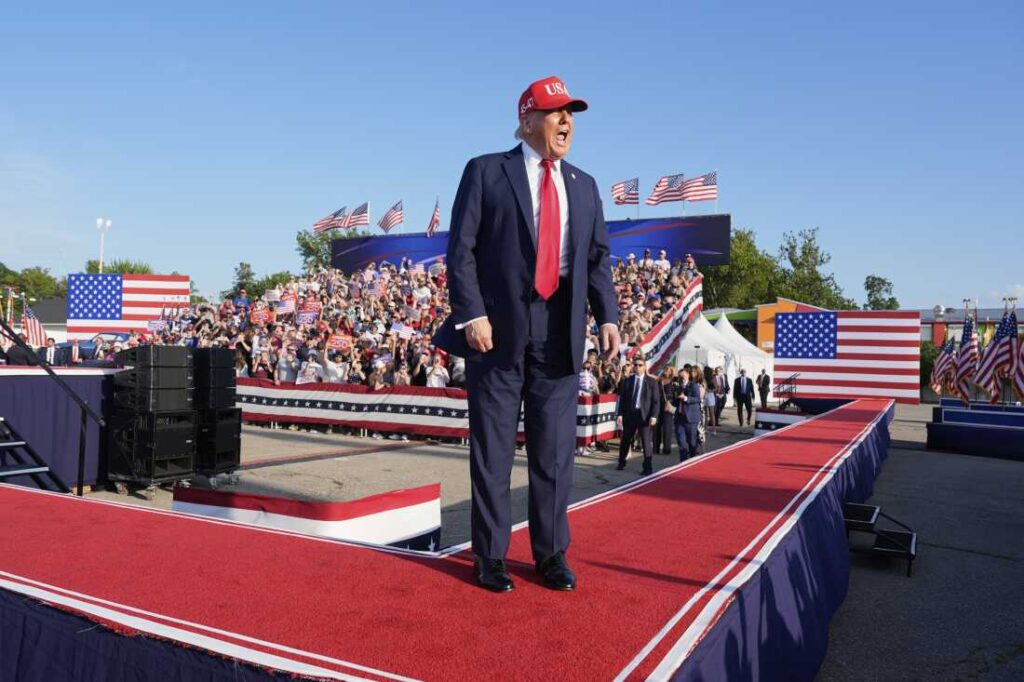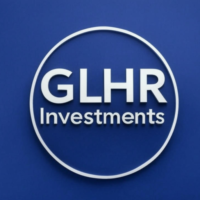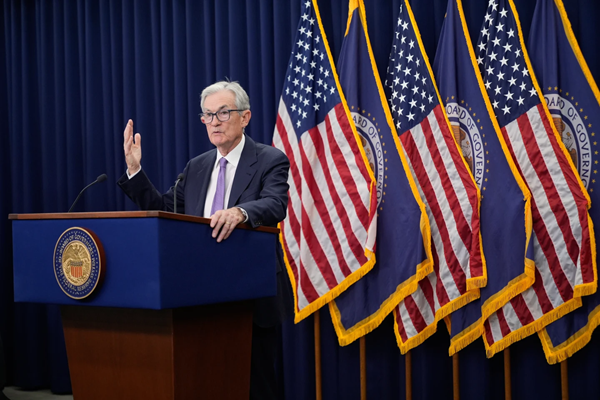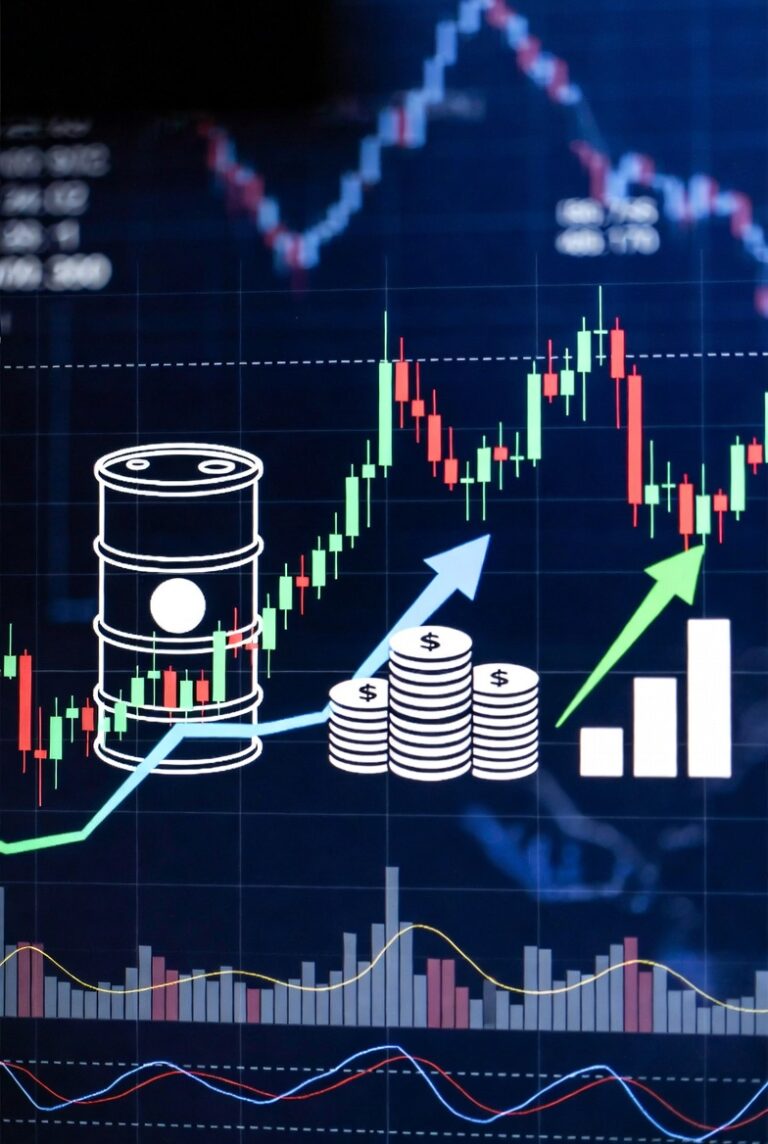
Trump’s September 2025 moves drive market volatility.
At GLHR Investing, we’re analyzing President Donald Trump’s key actions in July 2025, a month focused on AI deregulation, tariff threats, and international diplomacy, all amid a rallying stock market. The S&P 500 (SPY) surged to ~6,243 points by July 7, up 3.94% over the past month but down 15.6% YTD as of May 23, 2025, reflecting optimism from tax cuts and trade pauses but lingering tariff and geopolitical risks. Trump’s moves, including an AI ‘action plan’ and executive orders, have mixed implications for investors. With 3.2% CPI inflation, a 30% recession risk (per EY), and ongoing Iran-Israel tensions, how do these actions affect markets? Here’s a comprehensive breakdown of Trump’s July activities, their economic ripple effects, and strategies for investors to capitalize on opportunities while mitigating risks.
- Trump’s Key Actions in July 2025:
- July 2: Paused Weapons Shipments to Ukraine:
- Details: The Trump administration paused certain weapons shipments to Ukraine, as mentioned in a Department of State press briefing, amid efforts to broker a ceasefire with Russia.state.gov This move aligns with Trump’s focus on negotiating an end to the conflict, prioritizing U.S. resources.
- Economic Impact: Reduces U.S. military aid spending (~$43B pledged for Ukraine in 2025), potentially freeing funds for domestic priorities like infrastructure, but risks alienating allies and escalating global instability.
- July 3: Established the President’s Make America Beautiful Again Commission:
- Details: Trump signed an executive order creating a commission to promote classical architecture and beauty in federal buildings, emphasizing traditional American design.whitehouse.gov
- Economic Impact: Minor stimulus for construction and design firms, with potential contracts for U.S.-based architects, but limited overall market effect.
- July 10: Threatened Reciprocal Tariff Rate Increase:
- Details: Trump announced plans to increase baseline reciprocal tariff rates, targeting countries like China and others with unfair trade practices, as part of his ongoing tariff agenda.tradecomplianceresourcehub.com
- Economic Impact: Escalates trade tensions, raising import costs (5–10%) and potentially adding 0.5–1% to CPI, affecting consumer goods and tech sectors.
- July 17: GENIUS Act Passed in House:
- Details: The House voted on the GENIUS Act (S.1582) for stablecoin regulation, set to be signed into law on July 18, promoting crypto innovation and U.S. leadership in digital finance.@TheCryptoSquire
- Economic Impact: Boosts crypto adoption and fintech, potentially adding $1–2T to the economy through innovation, but risks regulatory overreach.
- July 18: Signed GENIUS Act into Law:
- Details: Trump signed the GENIUS Act, establishing frameworks for stablecoins and digital assets, as part of his pro-crypto stance.@TheCryptoSquire
- Economic Impact: Encourages investment in blockchain and fintech, with potential for $500B in annual crypto market growth.
- July 20: Marked Six Months in Office:
- Details: Trump released a video highlighting achievements like border security, deportations, economic revival, and tariffs, emphasizing “six months of power.”whitehouse.govdhs.gov
- Economic Impact: Reinforces investor confidence in domestic policies, supporting manufacturing and energy sectors through tariffs and deregulation.
- July 22: Greeted Philippines President and Released Documents Targeting Obama:
- Details: Trump met with the Philippines President to discuss security and economic ties, while releasing declassified documents alleging Obama’s involvement in past surveillance and plots against Trump.whitehouse.govnytimes.com
- Economic Impact: Strengthens U.S.-Asia alliances, potentially boosting trade and investment, but the Obama documents could fuel political instability, affecting market sentiment.
- July 23: Released AI ‘Action Plan’ and Signed Executive Orders:
- Details: Trump unveiled an AI action plan to eliminate regulations, finance exports, and promote U.S. AI leadership, signing executive orders at an AI Summit to dismantle bureaucratic red tape.npr.org+3 more
- Economic Impact: Deregulation could accelerate AI growth ($215B market, +11.3% CAGR), adding $1–2T to GDP by 2030, benefiting tech and innovation sectors.
- Critical Assessment: Trump’s July actions emphasize economic nationalism (tariffs, AI deregulation) and political confrontation (Obama documents), boosting domestic manufacturing and tech but risking trade wars and instability. The GENIUS Act and AI plan are pro-growth, but tariff threats and deficit increases ($3.1T from OBBBA) could fuel inflation (3.2% CPI) and volatility.
- July 2: Paused Weapons Shipments to Ukraine:
- How Trump’s July Moves Affect Investors:
- Positive Impacts:
- AI Deregulation: The July 23 AI action plan to remove red tape and finance exports boosts tech stocks, with AI market projected to $697B by 2035 (+11.3% CAGR), per web data. Investors in NVIDIA (NVDA, +44% YTD) and Broadcom (AVGO, +44% YTD) see upside from innovation freedom.
- Tariff Threats: Reciprocal tariffs (July 10) protect domestic firms, lifting industrials (e.g., Nucor +8.3%) and manufacturing, per web data. The energy sector benefits from reduced clean energy credits, with oil at $80/barrel supporting ExxonMobil (+10% YTD).
- Crypto Regulation: GENIUS Act (July 18) for stablecoins enhances crypto legitimacy, driving Bitcoin to $123,153 and stocks like Coinbase (COIN, +57.7% YTD), per web data.
- Philippines Meeting: July 22 talks strengthen U.S.-Asia ties, potentially boosting trade-exposed stocks (e.g., Apple, +15% post-tariff pause), per web data.
- Market Sentiment: Six-month milestone (July 20) reinforces investor confidence in domestic policies, supporting a ~3.94% SPY gain over the past month.
- Negative Impacts:
- Political Instability: Obama-targeted documents (July 22) and conspiracy claims (e.g., X posts on Obama coup) could erode trust, spiking VIX and hurting sentiment-sensitive sectors like consumer discretionary, per web data.
- Deficit and Inflation Risks: OBBBA’s $3.1T deficit addition and tariff threats (July 10) push yields to 4.46%, risking higher inflation (3.2% CPI) and rate cut delays (20% chance in July), pressuring high P/E stocks (e.g., tech), per web data.
- Trade Tensions: Canada suspension (June 27) and tariff increases extend uncertainty, with a potential 5–10% cost hike for imports, hitting tech and consumer goods (e.g., Nike -20% YTD), per web data.
- Geopolitical Spillover: Iran-Israel conflict risks oil spikes to $100–$120/barrel, adding 1–2% to CPI and hurting cyclical stocks, per web data.
- Critical Assessment: Trump’s actions boost short-term market optimism (e.g., AI, crypto) but exacerbate deficits and trade risks, potentially leading to a 5–10% SPY correction if tariffs resume, per web data.
- Positive Impacts:
- Investor Strategies:
- Opportunities:
- Tech and AI: Deregulation favors NVIDIA (NVDA, P/E 60, +44% YTD) and Broadcom (AVGO, +44% YTD), per web data.
- Crypto Stocks: GENIUS Act supports Coinbase (COIN, +57.7% YTD) and MARA Holdings (MARA, +15% YTD), per web data.
- Industrials: Tariff protection boosts Nucor (NUE, P/E 11, +8.3% in June), per web data.
- Energy: Oil volatility favors ExxonMobil (XOM, P/E 13, +10% YTD), per web data.
- Portfolio Allocation:
- Allocate 10–15% to tech/AI (NVDA, AVGO), 10% to crypto (COIN), and 40% to defensives (JNJ, PG) for stability, per prior analyses.
- Hedge with 3–5% in gold (GLD, +3%) or utilities (XLU, +1%) to counter inflation (3.2%) and tariff risks, per web data.
- Top Picks:
- NVIDIA Corporation (NVDA): ~$94, 0.1% yield, P/E ~60, up ~44% YTD, buy near $90, target $110–$120, per web data.
- Coinbase Global, Inc. (COIN): ~$250, 0% yield, P/E ~40, up ~57.7% YTD, buy near $240, target $280–$300, per web data.
- Nucor Corporation (NUE): ~$160, 1.3% yield, P/E 11, buy near $150, target $180–$200, per web data.
- ExxonMobil Corporation (XOM): ~$115, 3.3% yield, P/E 13, buy near $110, target $125–$130, per web data.
- ETFs for Diversification:
- Technology Select Sector SPDR Fund (XLK): ~$220, 0.7% yield, buy near $210, target $240, per web data.
- Financial Select Sector SPDR Fund (XLF): ~$51.94, 1.5% yield, up ~10% YTD, buy near $50, target $55–$60, per web data.
- Energy Select Sector SPDR Fund (XLE): ~$90, 3% yield, up ~10% YTD, buy near $85, target $100, per web data.
- Timing:
- Buy on SPY dips near $6,000 or stock pullbacks (e.g., NVDA <$90), per web data.
- Dollar-cost average ($500–$1,000/month) to manage VIX (~20–25), per web data.
- Key Catalysts to Monitor:
- August 1 Tariff Deadline: Reinstatement of 125% China tariffs could hit tech margins, per web data.
- July 30 FOMC Meeting: Rate cuts (20% chance in July) could boost stocks and crypto, per web data.
- Q2 Earnings (July): Confirm NVDA and COIN growth, per web data.
- Iran-Israel Conflict: Oil at $80/barrel risks inflation (5–6%), per web data.
- Risks:
- Political Instability: Obama-targeted documents (July 22) and conspiracy claims could erode confidence, per web data.
- Inflation Surge: CPI at 3.2%, potentially 5–6% with oil spikes, per web data.
- Recession Risk: 30% probability (EY) could curb spending, per web data.
- Trade Tensions: Tariff increases and Canada suspension risk cost hikes, per web data.
- Opportunities:
- Conclusion: Capitalizing on Trump’s July Momentum:
- Trump’s July 2025 actions—tariff threats, AI deregulation, the GENIUS Act for crypto, and diplomatic engagements—drove a 3.94% SPY gain over the past month, boosting tech, crypto, and industrials while exposing risks from deficits and political instability. Investors should buy AI (NVDA), crypto (COIN), and tariff-protected stocks (NUE) on dips, diversify with XLK and XLF, and hedge with GLD to balance growth and stability in a turbulent market.
- Why It Matters: Trump’s July moves—AI deregulation and tariff threats—reshape markets, fueling tech and crypto rallies but risking inflation (3.2% CPI) and trade wars. With SPY up 3.94% over the past month, picks like NVIDIA and Coinbase offer upside amid a 30% recession risk. GLHR Investing guides you to seize these opportunities, building a resilient portfolio for H2 2025.
Invest smart with GLHR Investing—ride the Trump wave, secure your wealth!
Disclaimer: GLHR Investing is not a financial adviser; please consult one.








